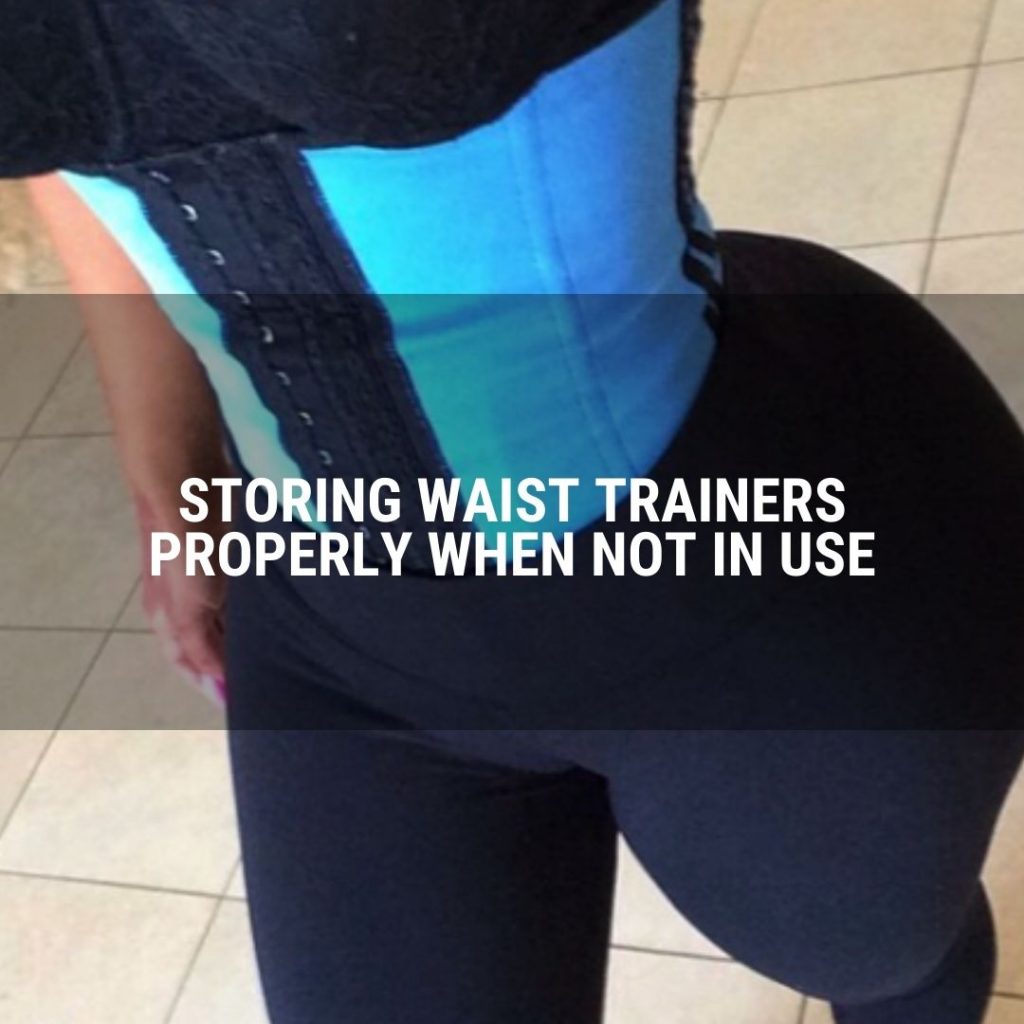Waist trainers are an excellent tool for anyone who wants to get into the figure they have always dreamed of. Wearing one while working out can help you lose excess fat, one of their most significant benefits. Waist trainers are made to be comfortable. But you need to know how to wash it so that it can remain excellent even after wearing it for an extended period.
So, without further ado, here’s how to clean a waist trainer!
Table of Content
- What are the materials used in Waist Trainer?
- Easy steps you can follow
- Can you put a waist trainer in the washer?
- How to wash waist trainer with Velcro?
- How often should I wash my waist trainer?
- What if the waist trainer gets stained?
- How to dry it?
- Storing waist trainers properly when not in use
- Things to avoid when washing your waist trainer
- How Often Do I Wash My Waist Trainer?
- Why Does My Waist Trainer Smell?
- FAQ
- Conclusion
What are the materials used in Waist Trainer?

Waist trainers can be made of a variety of materials, but some of the most common include:
- Latex: Latex is a flexible, stretchy material that is commonly used in waist trainers. It can provide a snug fit and help to compress the waist, creating a slimming effect.
- Neoprene: Neoprene is a synthetic rubber material that is often used in waist trainers. It is durable and can provide a lot of support and compression, making it a popular choice for people who want to sweat more during workouts.
- Cotton: Some waist trainers are made of cotton, which can be more breathable and comfortable for some people. However, cotton may not provide as much compression as other materials.
- Spandex: Spandex is a synthetic material that is often blended with other materials, such as cotton or polyester, to create a stretchy and comfortable waist trainer.
Easy steps you can follow
Washing a waist trimmer must be done with care because complex products are formed using intricate fabrics and other items. If not done carefully, you may wind up breaking it in the process.
It’s a good idea to do some research on the same material your waist trainer is composed of. This will help you figure out the best approach to keep it clean.
Nevertheless, we have included the following basic steps on how to wash a waist trainer, so it lasts much longer:
- Fill a tub halfway with lukewarm water and add a few drops of a gentle cleanser like baby shampoo, shower gel, or light detergent. You should not use hot water since it might harm the cloth or cause discoloration.
- Gently press it down to ensure that the whole surface is soaked. Then immerse it for 5 minutes.
- Scrub carefully with a gentle sponge or towel. Use nothing too abrasive or rough that could harm the material.
- Remove the waist trimmer belt from the water and carefully rinse it. Allow it to soak in the sink for 5-10 minutes only with water (no mild or strong detergent).
- Remove it from the tub and gently drain off any excess water. Wringing or bending the material might cause it to break, especially if it has inner flexible steel bones.
- Allow it to dry naturally. It is supposed to drip water, so leave it outside (avoiding direct sunlight) or on top of a cloth. Avoid ironing since it can ruin the fabric.
More info in the post: best waist cinchers for plus size.
Can you put a waist trainer in the washer?

Because the corset is so fragile, it is not advised to be cleaned in a washer. The hooks and clasps can potentially become entangled and snap, or the inner flexible steel bones might break and tear the cloth from the inside.
Some waist trainers are constructed of latex and include steel bones within. Some are lined with a material called Neoprene. It is a synthetic rubber that keeps its elasticity across a variety of temperatures. Neoprene is a highly sensitive substance, which is why it should never be washed or dried in a machine.
Avoid using liquid soap to cleanse your workout waist trainer since certain detergents include chlorine, ethanol, dyes, and perfumes that might harm the material. If you must use detergent, choose an all-natural or weak cleanser. But it would be much better to use shower gel, soft shampoos, or baby shampoo.
How to wash waist trainer with Velcro?
Although Velcro on waist trainers is beneficial and convenient, it may be pretty aggravating when they no longer stick well. Usually, the cause is that the glue wears off gradually over time, or there could be a lot of dust collected in the Velcro, making it hard to secure tightly.
More info in the post: best fat burner waist trainer.
Although you can put Velcro in a washer to clean it, waist trainers are generally advised to be cleaned by hand. Thus, to make things easier, you can first use a stiff toothbrush to clean out lint or dust from the straps. If the dirt or lint is too deep inside, you could use a tweezer to pick it out manually. Once you have it cleaned this way, you can proceed to clean the waist trainer like the steps mentioned above.
How often should I wash my waist trainer?
It’s not really essential to wash your waist trainer every time you wear it. You may wear it a couple of times between the wash cycles. However, it is vital to clean it on a routine basis so that it preserves its compression and structure.
Wash frequency is often determined by how often the trainer is used and whether or not you wear it with a thin shirt underneath.
Maintaining a regular routine means that your waist trainer, like your skin, is continuously exposed to sweat and microorganisms. We recommend cleaning it at least two to three times every week to keep your routine safe.
If you use a cotton t-shirt or tank top underneath, the skin will be less affected, and the trainer will not be subjected to the majority of your sweating and dirt. We recommend cleaning it at least once or twice a week in this instance.
What if the waist trainer gets stained?
The secret to removing most stains is to react fast, usually while the stain remains fresh. Remember to check the detergent or stain remover and avoid using the ones that aren’t suitable for the fabric.
If a gentle sponge or soft cloth does not remove tough stains, try using an old toothbrush – or one with soft bristles. Apply some cleanser to the brush and clean the stained area gently, being careful not to bend anything while scrubbing the surface.
How to dry it?
The first is to avoid putting it in a dryer as the material or components may easily break or wear out fast. Another point is to avoid keeping it in direct sunlight unless you want it to look discolored. The best possible way to dry it is naturally, without any machine or direct sunlight. Even if it could be sunny and bright outside, keep your waist trainer in a shaded area and let the wind dry it instead.
The waist trainer may also be kept on a drying rack. When it has dried thoroughly, it is set to use again! And allow it to dry naturally by placing it upright.
Storing waist trainers properly when not in use

Before storing your waist trainer, ensure it is totally dry. You wouldn’t want mold or fungus to grow in any of it. Also, avoid wearing it if it’s damp; otherwise, you’ll develop a rash. To keep the trainer in good condition, store it flat in a drawer or cupboard that is not exposed to sunlight. Also, don’t try to roll it up. It is also possible to hang it with clothespins or garment hooks.
If you own more than one waist trainer, it is positively better. You can switch them on a regular basis so each waist trainer may rest between wears. This will also extend the life of your waist trainers.
Waist trainers are pretty efficient in forming a lovely hourglass shape, and as such, they have benefited thousands of women worldwide in creating attractive profiles. It is not required to clean the trainers every time you wear them, and you may wear the trainer a few times between washing, but it really is essential to clean the garment on a regular basis so that it retains its compaction and form.
Things to avoid when washing your waist trainer
Waist trainers are intended for frequent use, and many people use them while working out, which leads to the requirement of regular cleaning. But you should know that while washing it, there are certain dos and don’ts to follow. If you care about longevity and want to maintain your waist trainer properly, avoid doing these things:
- Don’t put your waist trainer in the dryer. This can make it shrink down usually if it is made of or has components of latex.
- As much as washing is encouraged, avoid washing it every single day as it can also cause the material to wear out fast.
- Never use strong detergent or chemicals to wash or scrub out stains. Waist trainers also have a component called Neoprene, a material that is weak to strong soaps and chemicals.
- Avoid using iron as most waist trainers are made of latex, and if the hot iron gets on it, your trainer is as good as destroyed.
- Don’t use dryers; and instead, opt to dry it naturally.
- But even for natural light, avoid keeping it under direct sunlight. Choose to let it air-dry.
- Avoid using a washing machine at all costs, and choose to wash it by hand.
More info in the post: best mens waist trainer for weight loss.
How Often Do I Wash My Waist Trainer?
A waist trainer isn’t one of those garments that will do well if frequently washed. That is why it is best to clean it once or twice a week, the methods stated above.
An added tip would be to wear a tank top or T-shirt underneath the waist trainer. It might sound like a bad idea and more arduous to work out in; sweating more helps you to shape your body! With the tank top / T-shirt underneath your waist trainer, all the sweat and stink are absorbed, leaving only a perfect body shape!
The tank top or shirt should be light and preferably made of cotton. This way, the sweat goes directly into something that can be washed regularly, and you are spared the trouble of cleaning a waist trainer!
Why Does My Waist Trainer Smell?
Customarily there can be two types of odors coming from your waist trainer.
The first type of odor or smell could be of rubber. Your waist trainer has a high quantity of latex/rubber, so when you take it out of the packet it arrived in, it could smell of rubber. The solution is simply leaving it out for a while, as the smell will disappear.
The second type is the foul stench of sweat. While this element is a major for sculpting the ideal hourglass shape, it sure mucks up your waist trainer. You can prevent this, as mentioned above, by wearing a cotton t-shirt or tank top, as it absorbs the sweat.
Other than this, the stench may be your signal to wash your stinky waist trainer by using the methods mentioned above.
FAQ
Ask your questions in the comments below and we will answer!
How to wash waist trainer in a washing machine?
This is not the recommended way to clean a waist trainer, as the latex or plastic on these garments could break. Instead, hand washes with mild soap and cold water. Air dry it rather than put it in the dryer.
Can i put my waist trainer in the dryer?
No, do not put your waist trainer in the dryer. Air drying is the recommended way to dry a waist trainer. Putting it in the dryer could cause it to stretch out or lose its shape.
How to wash latex waist trainer?
To wash your latex waist trainer, begin by dipping the soft cloth in warm water and lathering it up with soap. The mild shampoo or body soap will come in handy for this purpose.
Wash a little so as to soften them further before using on yourself; after that apply gentle pressure with small circular motions while washing away any dirt from earlier wearing sessions if necessary – and be sure not to rinse too much because some people don’t want their clothes smelling like seaweed do they?
While most waist trainers are made from latex, please be gentle when you wash them, or else the fabric will have an adverse effect on how they fit. Latex is capable of holding its shape but only if it’s gently treated so as not to damage any parts with soap residue left behind after the cleaning process ends up hurting more than helping because then there would still need washing again even though this time around.
At least some amount got removed by simply wiping away all visible surface areas before dipping cloth periodically into clean water containing mild detergent followed by resuming normal course completeness steps until complete – ensure everything has been cleaned thoroughly without leaving anything hidden undercover.
Conclusion
Waist trainers are now considered a blessing by most women who are working towards achieving the perfect shape of their bodies.
They are a great way to curve your waistline and give you a flat, athletic figure. But how do you deal with the question of washing them? According to experts, it is extremely important to clean them at least once a week, if not more often.
It is simply a necessary process to perform the cleaning if you want to get full service from your waist trainer. This might seem like a lot of washing, but if you take a moment and think about it, isn’t it worth it?




